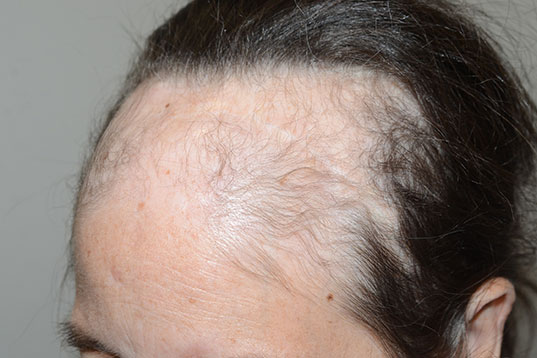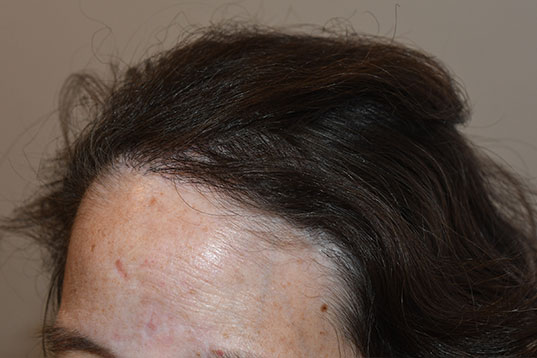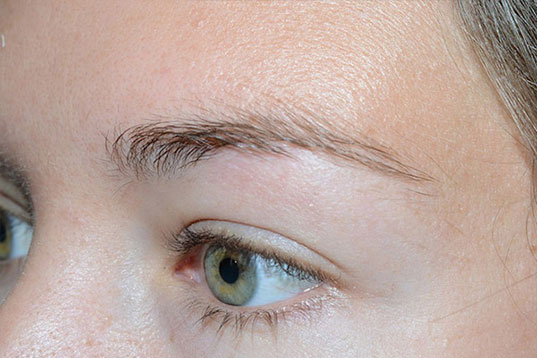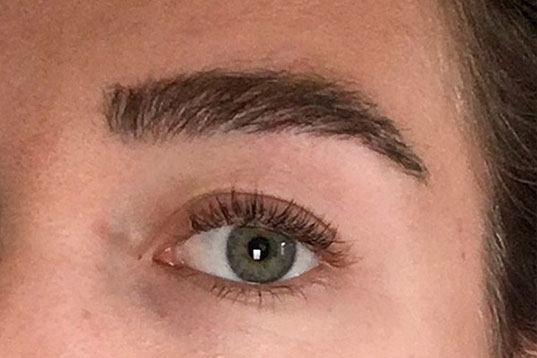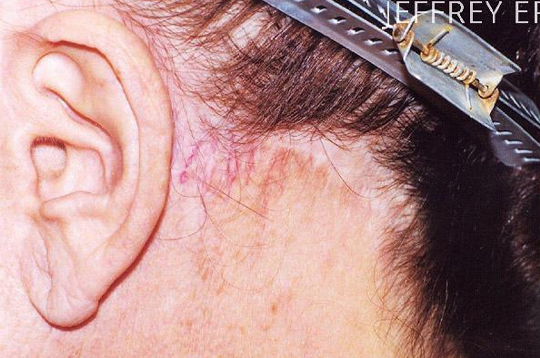Foundation Aesthetic Hair Restoration offers specialized hair procedures for women to address concerns like thinning hair, high foreheads, and eyebrow restoration. Led by J. Epstein, MD, FACS, our team combines cutting-edge techniques with a refined aesthetic eye to deliver stunning, natural results. From hairline adjustments to eyebrow enhancement, our methods are designed to enhance your confidence and restore your natural beauty.
Women’s Hair Procedures
ACTUAL PATIENT
Restore your dense & luscious hair
Hair loss in women can be caused by various factors, including genetics, hormonal changes, stress, and certain medical conditions. Androgenetic alopecia, also known as female pattern baldness, typically results in diffuse thinning from the part, while high hairlines are not infrequently due to genetics and present since birth. Prior plastic surgery, like browlifts and facelifts, can leave visible scarring and distort the appearance of sideburns, while hairstyles that exert tension on the hair follicles, such as tight ponytails and braids, can also contribute to hair loss. Then there are a number of women who due to overzealous plucking have been left with thin, unaesthetic eyebrows. These conditions not only affect a woman’s appearance but can also impact her self-esteem and confidence.
At Foundation Aesthetic Hair Restoration, we offer a comprehensive suite of women’s hair procedures that artfully address these concerns. Techniques like hairline lowering surgery are designed to redefine the forehead, creating a balanced and aesthetically harmonious facial appearance. Meanwhile, our advanced hair restoration methods, including follicular unit extraction (FUE), ensure unsurpassed naturalness by expertly transplanting healthy hair follicles to thinning areas. For those with sparse brows, eyebrow transplantation restores fullness and symmetry, enhancing the natural beauty of your facial features.
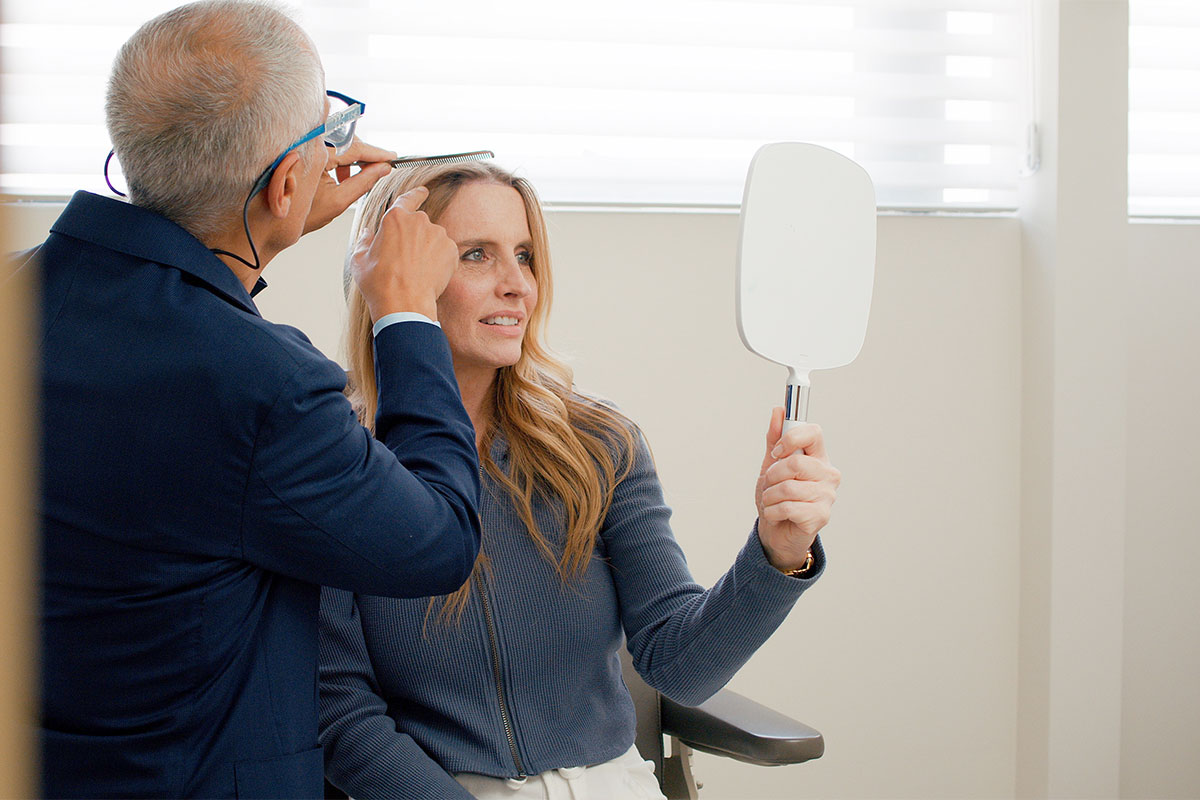
ACTUAL PATIENT
Women’s hair procedures help with
- Thinning hair along the part or crown
- Patchy bald spots on the scalp
- Receding hairline or naturally high forehead
- Sparse or thinning eyebrows
- Hair loss due to traction alopecia from tight hairstyles
- Scarring alopecia from previous surgeries or injuries
- Hair loss resulting from hormonal changes, such as menopause
- Hair loss associated with autoimmune disorders like alopecia areata
- Hair thinning due to stress or poor diet
- Hair loss caused by thyroid issues or other medical conditions
Benefits of our women’s hair procedures:
- Seamless integration with existing hair for natural-looking results
- Restoring hair significantly improves self-esteem and overall appearance
- Long-lasting, permanent solutions through techniques like FUE and hairline lowering
- Minimally invasive procedures with quick recovery times
- Each procedure is tailored to address individual hair loss patterns and needs
- Patients receive thorough consultations and follow-ups to ensure optimal outcomes
- Procedures can increase hair thickness and fullness in targeted areas
- Advanced methods ensure virtually no scarring, delivering superior aesthetic results
Women’s hair procedures include
Hairline lowering/forehead reduction surgery
Hairline lowering or forehead reduction surgery involves a precise incision along the hairline, allowing the surgeon to move the scalp forward and remove excess forehead skin. This artful approach reshapes the forehead, bringing the hairline to a more desirable and proportionate position. The recovery is smooth, with immediate, stunning results that are virtually scar-free, as the incision allows hair to grow through it, naturally camouflaging the scar.
Follicular unit transplantation (FUT)
Follicular unit transplantation (FUT) involves expertly removing a strip of scalp from the back or side of the head, where hair is naturally denser. The strip is divided into grafts containing individual hair follicles, which are then meticulously transplanted into thinning areas. While FUT leaves a linear scar at the donor site, it allows for a significant number of follicles to be transplanted in a single session, which is ideal for comprehensive coverage.
Follicular unit extraction (FUE)
Follicular unit extraction (FUE) harvests individual hair follicles directly from the donor area using a precise punch tool. This eliminates linear scarring, making it less invasive and allowing for faster recovery compared to FUT. FUE can be performed using the traditional method or the discreet No-Shave FUE technique, where only the donor hairs are trimmed, making it perfect for those seeking a refined, subtle enhancement. The harvested follicles are then strategically implanted into thinning or bald areas, resulting in a fuller, more natural look.
Eyebrow transplantation
Eyebrow transplantation enhances the density and shape of sparse or thinning eyebrows. It involves carefully harvesting hair follicles from a donor area, typically the back of the scalp, and implanting them into the eyebrow region with an aesthetic eye for symmetry and flow. This ensures the transplanted hairs mimic the natural growth pattern of your eyebrows. The procedure is performed under local anesthesia, with the option of twilight sedation, and can take several hours, depending on the number of grafts needed.
Non-surgical treatment options
For those seeking less invasive solutions, our non-surgical treatments include topical medications like minoxidil (Rogaine), which stimulate hair growth and combat hair thinning. Custom compounded formulations based on genetic testing can also be used. Other advanced options include at-home laser light therapy, which promotes hair growth by stimulating follicles with low-level laser light, and adipose-derived growth factors, which use injections of growth-enhancing solutions derived from the patient’s own fat tissue to encourage hair regrowth.
Women’s hair procedures FAQs
Why is my hair falling out?
Hair loss in women can result from various factors, including genetics, hormonal changes, stress, nutritional deficiencies, certain hairstyles, and medical conditions like thyroid disorders or autoimmune diseases. A thorough medical evaluation can help identify the cause.
Can female hair loss be reversed naturally?
In some cases, female hair loss can be managed or reversed through lifestyle changes like improving diet, reducing stress, and avoiding hairstyles that pull on the hair. However, the effectiveness of natural remedies depends on the cause of hair loss.
How much hair do you need to have a hair transplant as a woman?
Candidates for hair transplant surgery typically need sufficient donor hair, usually from the back or sides of the scalp, to be transplanted to thinning areas. The amount of donor hair required depends on the extent of hair loss and the desired density of the restored hair.
Will a hair transplant make my hair thicker?
Yes, hair transplants can enhance the appearance of thickness by redistributing follicles from denser areas to thinning or bald regions. This results in a fuller, more natural-looking hairline and overall improved hair density.
Initiate your end-to-end hair
restoration experience
Foundation Aesthetic Hair Restoration is your ultimate destination for comprehensive hair restoration uniquely tailored for women. Led by the renowned Dr. J. Epstein, our team combines unparalleled expertise, advanced techniques, and a refined aesthetic eye to deliver stunning, natural results. What sets us apart is our dedication to a seamless, supportive experience — from the initial consultation to complete recovery, we ensure you receive the best care. Schedule your consultation to explore your options for elegant, lasting hair restoration.
ACTUAL PATIENT
Contact Us Today
Start Your
Journey
Have questions? Reach out today
for answers and more information.

